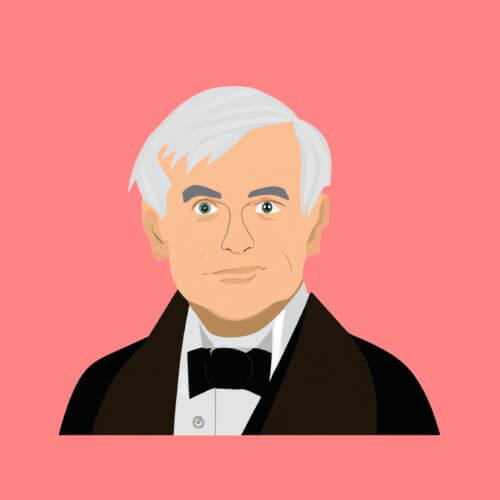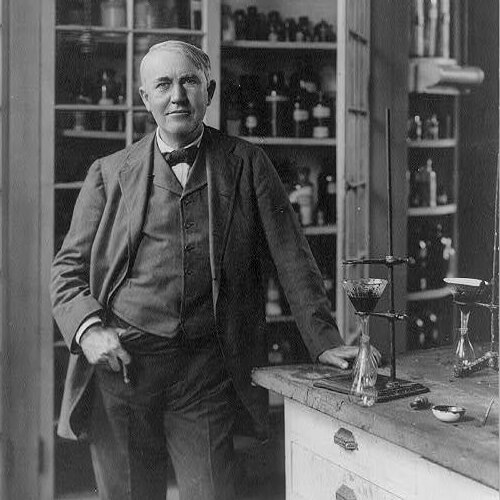



Thomas Alva Edison (11 February 1847 – 18 October 1931) was an American inventor and businessman, known for developing and patenting numerous inventions that have had a large impact on modern life. His most famous inventions include the phonograph, the motion picture camera, and the first practical electric light bulb.
Edison was born in 1847 in Milan, Ohio. His father, Samuel Edison Jr., was a political activist and his mother, Nancy Matthews Elliott, was a school teacher. Edison had only a few months of formal education, but his mother taught him at home, instilling in him a love for reading and learning. At a young age, Edison showed an interest in science and technology, conducting experiments and building his own devices. At the age of 12, he began working as a newsboy and later a telegraph operator, gaining practical experience in the communications industry.
As Edison grew older, he continued to develop his skills as an inventor, obtaining his first patent at the age of 21 for an electric vote recorder. He later moved to Menlo Park, New Jersey, where he established his famous invention laboratory and continued to develop his most important inventions. Over the course of his career, Edison obtained over 1,000 patents for his inventions, many of which are still used today.
In 1877, Thomas Edison invented the phonograph, a device capable of recording and playing back sound, kind of like an early record player. The phonograph worked by using a needle to scratch sound waves onto wax cylinders. When the cylinders were played back, the scratches in the wax would cause the needle to vibrate, recreating the sound that had been recorded earlier. The phonograph was a major breakthrough in communication technology and paved the way for the development of modern audio recording devices.
The great inventor's personal library included works on science, history, philosophy, and literature, and he was known to read several books a week. Edison believed that reading was essential to self-improvement and lifelong learning, and he often credited his success to the knowledge and insights he gained from books. Today, Edison's library is still considered one of the most impressive private collections of books ever assembled by an American.
Edison's hearing loss began during childhood, possibly as a result of scarlet fever or an ear infection. Despite this, Edison was able to communicate effectively with others by using a hearing aid and reading lips. However, his hearing loss may have contributed to his tendency to work alone and to his preference for visual rather than verbal communication. For example, Edison often communicated with his assistants by using written notes or by signaling with hand gestures. Additionally, his hearing loss may have influenced some of his inventions, such as the phonograph, which was designed to record and play back sound.
In 1890, Thomas Edison designed one of the first talking dolls. By using a small phonograph, another of Edison's inventions, the doll could play recordings of nursery rhymes and lullabies. The dolls were made of wax and were originally marketed as a technological marvel, with parents eager to purchase them for their children.
Unfortunately for Edison, the dolls weren't a commercial success, as the sound quality was poor and the mechanical inner workings made the dolls expensive to produce. Nevertheless, the talking doll remains an interesting example of Edison's inventive spirit and his willingness to explore new technologies. The dolls are now highly sought-after collector's items, with some selling for tens of thousands of dollars at auction.